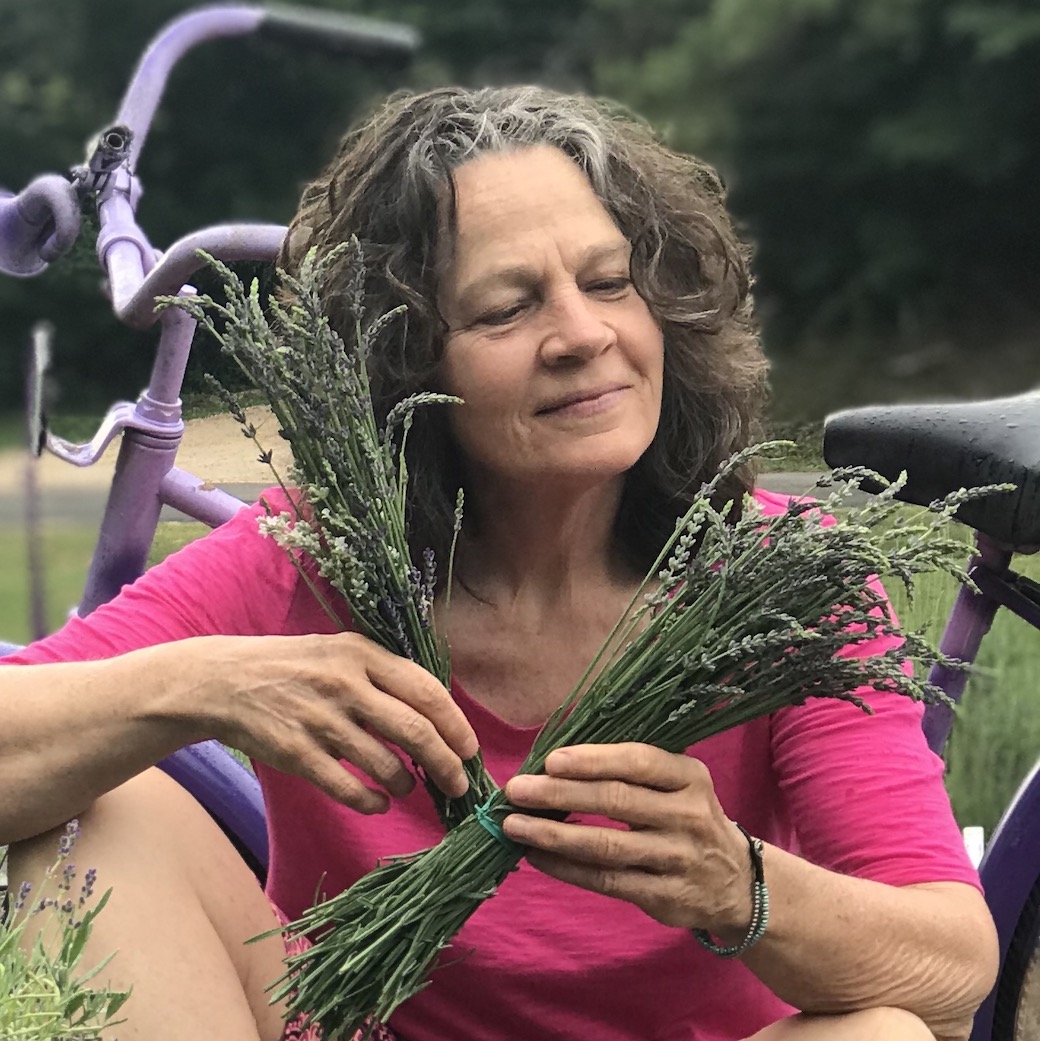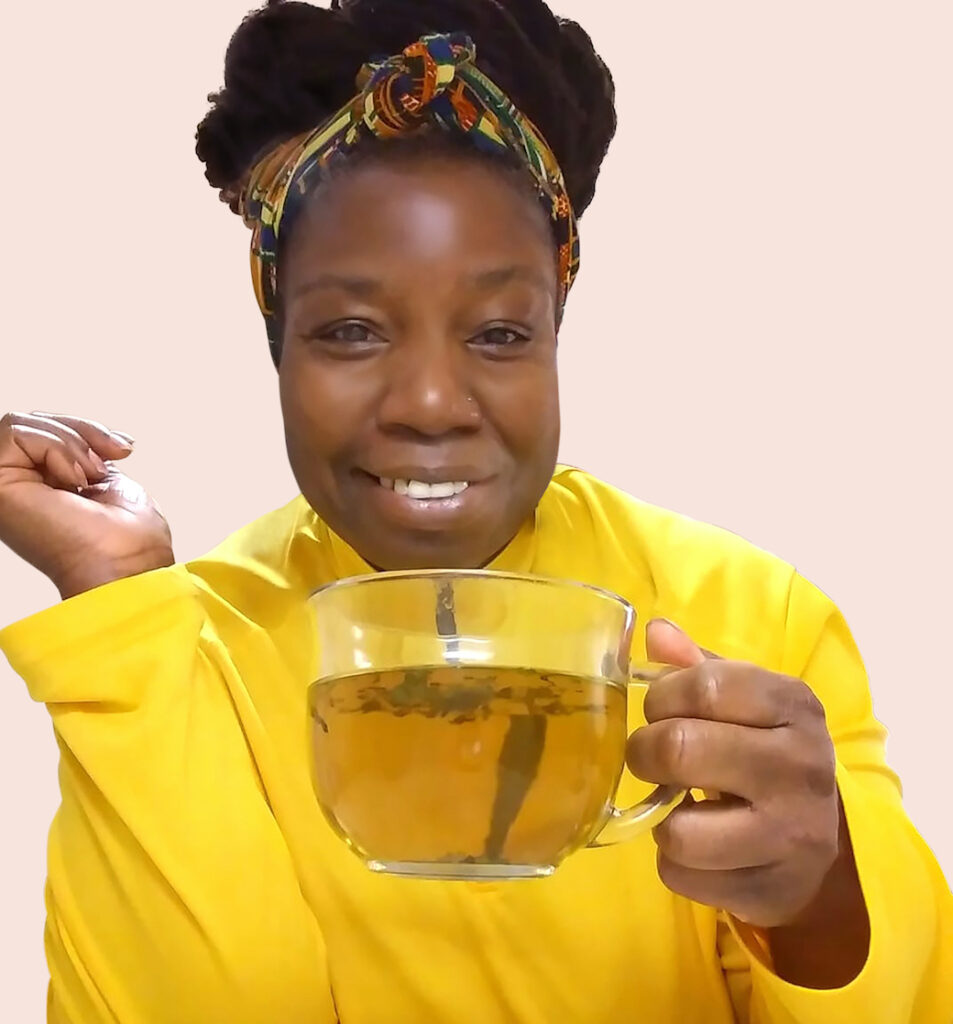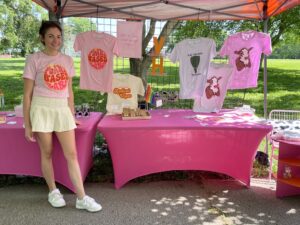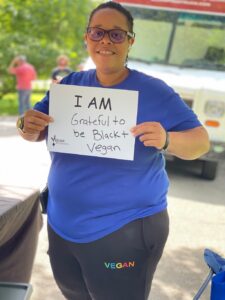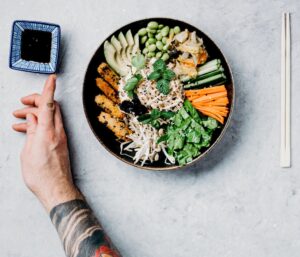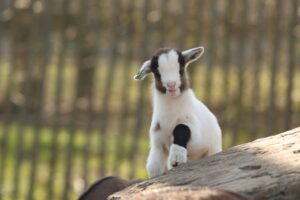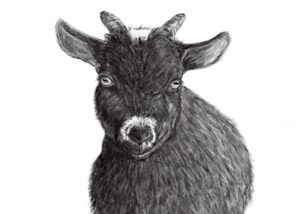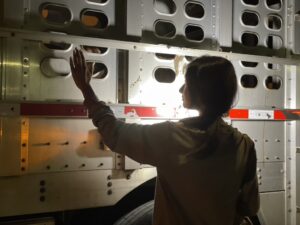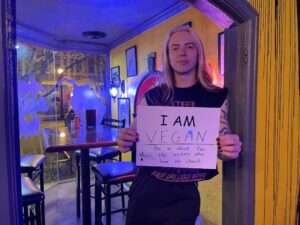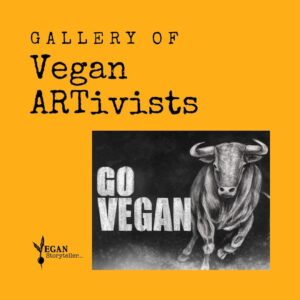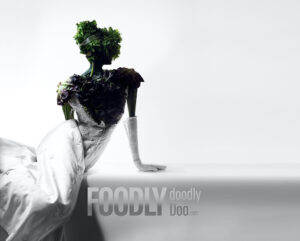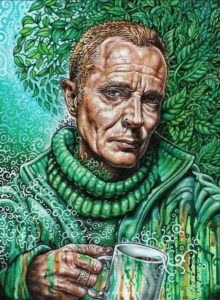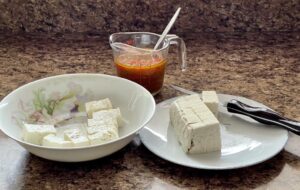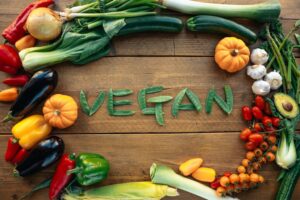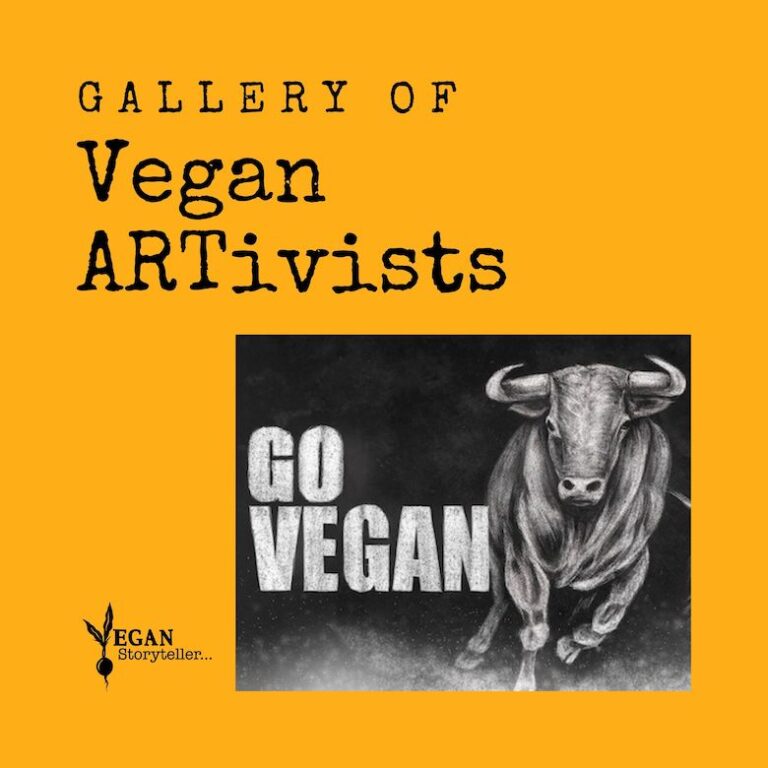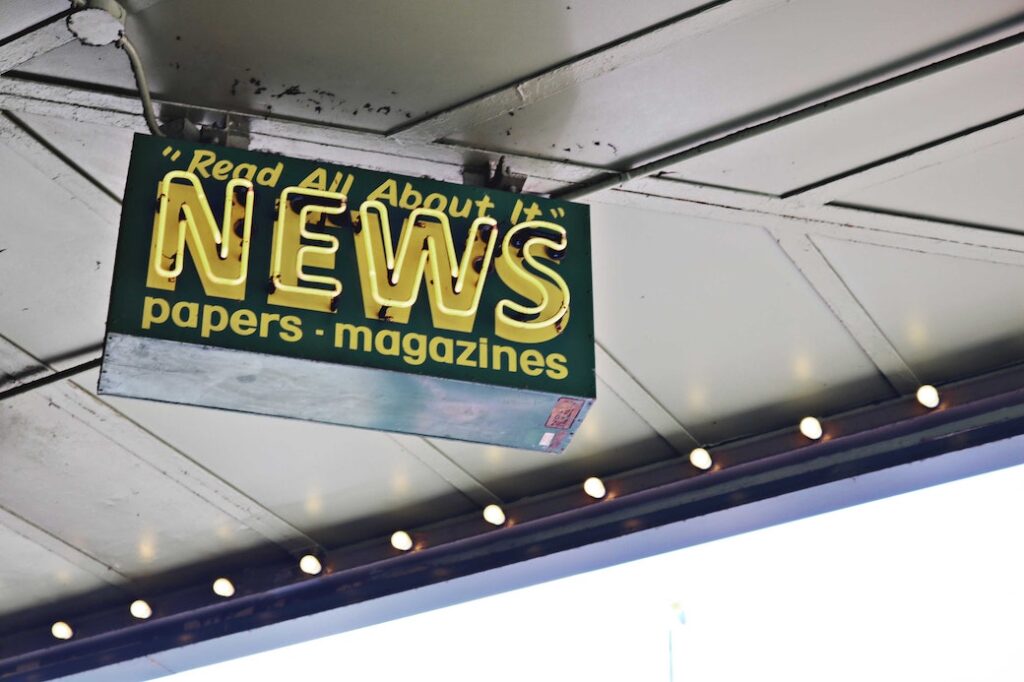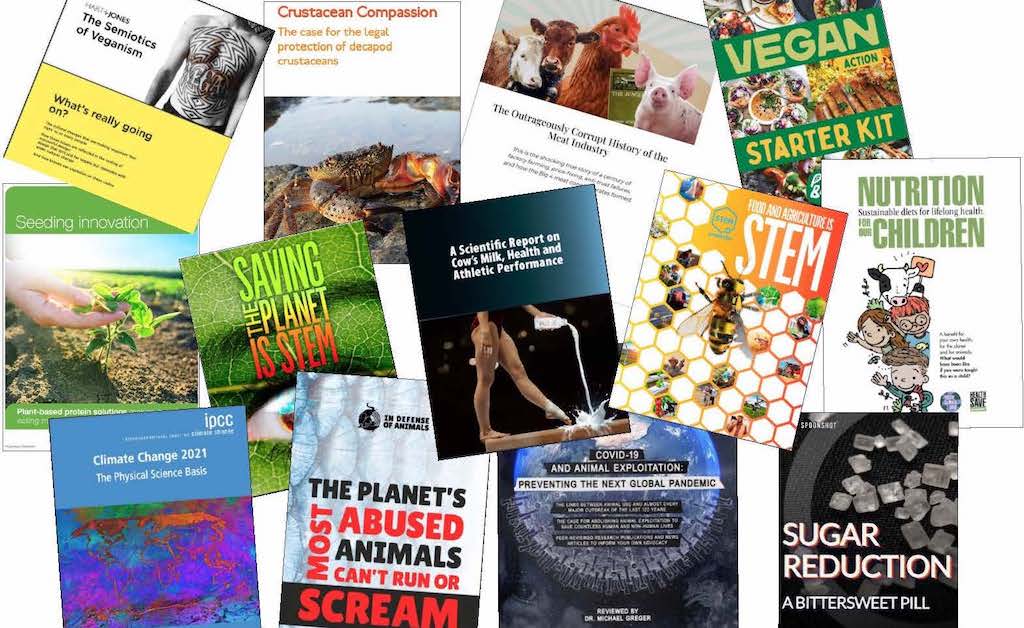Katie Belisle-Iffrig
Going from vegetarian to vegan wasn’t a conscious thought for me. I wasn’t consciously considering going vegetarian. I hadn’t read anything or watched any videos about it. I didn’t know any vegetarians. The transition just happened on its own one day when I had a sudden spiritual awakening.
I grew up in Missouri, in the Heartland of America. Meat was a staple of my diet and the diet of everyone I knew. I had fallen head over heels in love with animals at an early age, so, in hindsight, it was inevitable that one day I would become vegetarian.
The catalyst for the call came when I was in a restaurant one evening and the waiter brought the filet mignon I had ordered — cooked medium-rare. I cut into the beef and blood trickled across my plate and pooled. As though a vision from Mary had appeared, I saw reflected in the blood the face of Uther, my beloved soul-mate Rottweiler. I put my fork and knife down and didn’t venture near meat again.
That was in 1984. And then, 28 years later in 2012, I woke up to industrial dairy and chicken farming operations. Repulsed by what I learned, I vowed to adopt a 100% cruelty-free lifestyle and became vegan.
My heart opened to all animals and their welfare
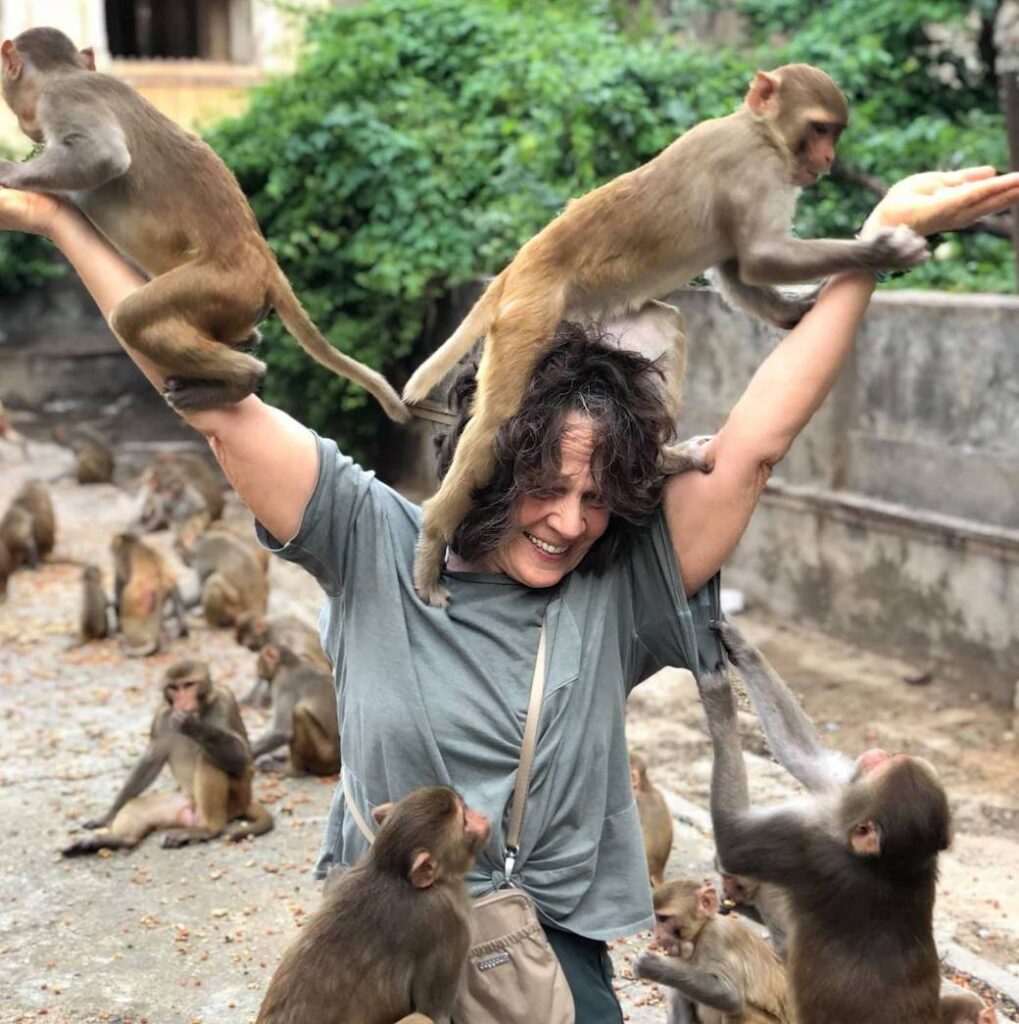
Ravi
When you're an animal lover, it's just a matter of time before you go vegan.
Jeanette McDermott Tweet
It’s no wonder that my journey of going from vegetarian to vegan is linked to my deepest passion, animals. I grew up with two beloved childhood dogs, Sniffles and Buttons. They meant the world to me.
My love for animals grew during summer breaks in elementary, middle, and high school, when I stayed on farms and in the country with aunts and uncles, cousins, and grandparents. These were the places where my heart burst wide open for animals that were destined for the dinner table.
When I grew up and left home to make a life for myself, I discovered untamed regions of nature where wildlife roamed, swam, and soared. And then, while living in Kentucky, I volunteered for a wildlife rehabilitation center and spent time mending and caring for orphaned and injured native wildlife.
My soul bonded with raccoons, possums, bats, black bears, foxes, coyotes, and other native Kentucky wildlife and, once again, my heart opened further to animals.
In these moments of heart expansion, I began to fully understand the sentience of animals and how necessary their lives are to themselves and their species, the balance of nature, and our own human happiness.
My devotion to animals defines, in large part, who I am. So, although I hadn’t planned specifically to become vegetarian, it was no surprise when the filet mignon gagged me and caused me to turn away from meat. When you’re an animal lover, it’s just a matter of time before you go vegan.
During those early childhood years of cooking, I never adjusted to the cloying smell of seared flesh. And I cringed each time mom said I needed to cut up a chicken to fry in hot grease. I still shudder when I think of the times I severed limbs from bodies.
Jeanette McDermott Tweet
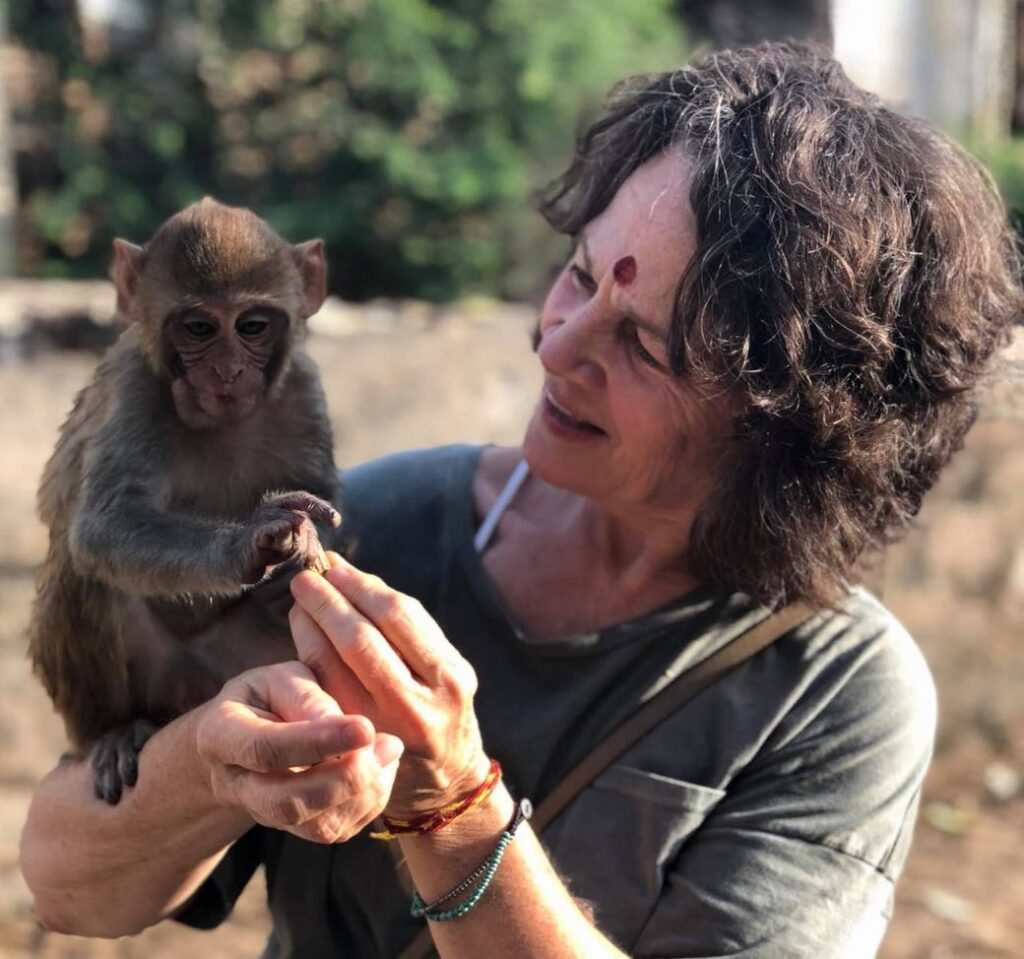
Read next How my career in photojournalism connects me to storytelling and activism
Being vegetarian wasn’t easy four decades ago
Going from vegetarian to vegan in recent years was far easier than becoming vegetarian nearly 40 years ago when plant-based eating was a cultural mystery in America.
I didn’t have a clue where to begin. I adopted a plant-based diet long before the lifestyle began trending, and years before blogs, vlogs, ebooks, training courses, and resource downloads became the societal norm. I was basically on my own to figure it out.
Nobody else in my family or friendship circle was vegetarian. Rather than being supported in this endeavor, I was teased and taunted. Well-meaning people told me I was ruining my health. Mean-spirited people called me a fanatic. Clueless people tried to coax me back into eating meat.
Nevertheless, I stayed true to the course and never wavered from my values and devotion to animals. I kept seeing Uther’s face in a pool of blood on my dinner plate. Those thoughts triggered memories of the farm animals I knew as a kid. The recurring images served to keep me on track.
All the same, I didn’t have mentors to guide me in how to balance a busy work and social life with preparing plant-based meals. Vegetarian and vegan starter kits were unheard of.
And so, as a newly minted vegetarian, I reached for bread and crackers, salted nuts, and chunks of cheese to stave off hunger far too often.
It was only when my body became noticeably rotund that I decided I had better learn to cook proper plant-based meals. Dining out wasn’t much of an option. Most restaurants in those days believed they were doing right by vegetarians by serving us a wedge of iceberg lettuce or plate heaped with boiled carrots and potatoes. By my way of looking at it, there are still far too many restaurants that believe food like this is an acceptable response to serving plant-based eaters.
I continued on my vegetarian path over the years. It would be a few more years before going from vegetarian to vegan.
In the process, I bought cookbooks with uncomplicated savory recipes and experimented in the kitchen. And so, before long I learned that vegetarian cooking wasn’t that difficult once I set my mind to it. But still, cheese dominated my daily menus, and my butt wasn’t getting any smaller.
Cooking meat was the norm growing up
I began cooking for my family when I was in elementary school. Mom went to work when the youngest of five children was born into the family. I was eight years old and needed to help relieve her of some domestic chores. God forbid my dad or three older brothers should lend a hand. Cooking meals and baking desserts were tasks I tackled to help mom maintain the household while she worked full-time.
During those early childhood years of cooking, I never adjusted to the cloying smell of seared flesh. And I cringed each time mom said I needed to cut up a chicken to fry in hot grease. I still shudder when I think of those times I severed limbs from bodies.
Chewing meat always felt like gristle in my mouth. To this day, I can’t eat vegan meat alternatives if they look anything at all like they came from an animal.
The Impossible Burger? Forget about it. It oozes red, just like blood. Clearly, I don’t have the heart for eating animals. Not then, and not now.
To this day, I can’t eat vegan meat alternatives if they look anything at all like they came from an animal. The Impossible Burger? Forget about it. It oozes red, just like blood. Clearly, I don't have the heart for eating animals. Not then, and not now.
Jeanette McDermott Tweet
A switch flipped and I went from vegetarian to vegan
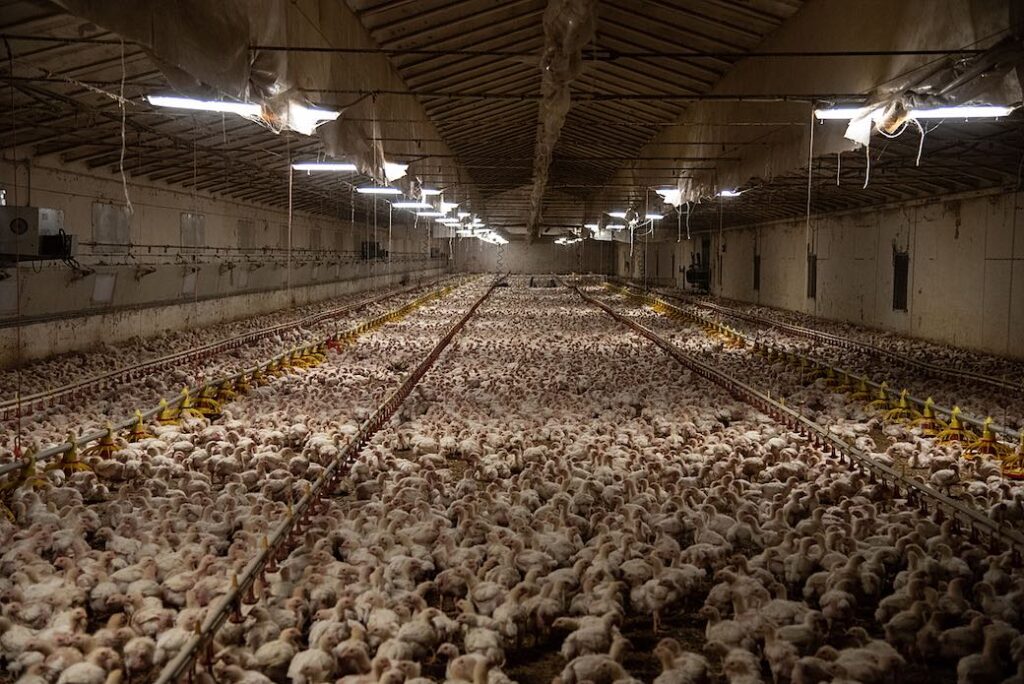
We Animals Media
There came a day when I began to think long and hard about those cheeses I couldn’t resist. And I thought about those eggs I cracked open to make cheese omelets. I wanted to lose weight, but that wasn’t the motivating force that tripped the switch in my consciousness.
Instead, it was learning the fate of dairy cows and factory-farmed hens and their chicks that sealed the deal. I realized with crushing horror that I was complicit in crimes against animals.
For nearly three decades, I had believed I was helping animals by being vegetarian. In that instant of recognition, I embarked upon a path that would take me from vegetarian to vegan.
Learning to eat vegan also took time, patience, and practice – just as vegetarianism had. With veganism came the learning curve of cooking without the cheese.
I wasn’t a fan of the early prototypes of vegan cheeses. Thankfully, they have improved in recent years. But in all honesty, I’m still not fond of them. I’m happy sticking with a whole foods plant-based diet and leaving processed foods on the grocery shelves.
In the early phase of my transition, I ate a lot of vegan junk food. But eventually, I caught on to eating a proper vegan diet. This time the transition to a new way of eating was easier because of the internet’s large network of support. Online vegan cooking shows, recipe blogs, community forums, podcasts, and vegan starter kits are among the helpful resources available to people transitioning to veganism today.
I knew the cravings for cheese and chocolate would eventually end, and they did.
Being vegan and living with IBS
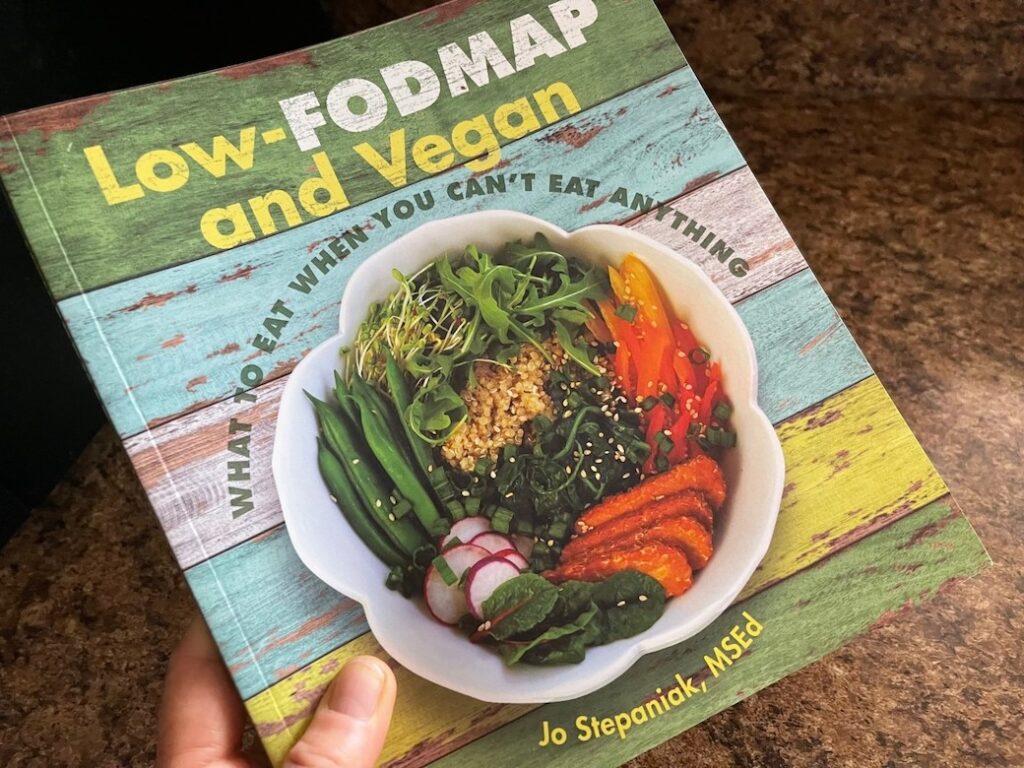
Jeanette McDermott
I had made up my mind to give up all animal products, so going from vegetarian to vegan really wasn’t all that hard. Then I hit a snag.
I learned in early 2021 that eating high FODMAP foods trigger symptoms of Irritable Bowel Syndrome (IBS), which has plagued me for decades. I had to reduce or eliminate certain FODMAP foods from my diet.
And so, here I was – faced with tackling yet again another change in diet and lifestyle. On Fat Tuesday of 2021, I began a 4-month elimination diet to discover which FODMAP foods I could eat and which ones I had to avoid.
In 2005, researchers in the Department of Gastroenterology at Monash University identified a group of short-chain carbohydrates found in food that are either poorly absorbed in the small intestine or impossible to digest. The Monash team named these carbohydrates FODMAPs, an acronym which stands for Fermentable Oligosaccharides, Disaccharides, Monosaccharides, and Polyols.
Because the sugars don’t absorb properly in the gut, moderate and high FODMAP foods trigger symptoms in people with IBS, most notably painful bloat and gut distension, abdominal cramping, diarrhea, and constipation. Charming, right?
Fruits and vegetables, grains, legumes, and most other plant-based foods contain FODMAPs. Some of these foods have less or more FODMAPs than others. For optimal well-being, people with IBS and other lower gastrointestinal problems will most likely feel better if they avoid foods that are high or moderately high in FODMAP.
The poorly absorbed carbohydrates wreak havoc on people like me. Meat doesn’t contain FODMAPs because there are no sugars in meat to ferment in the gut. While interesting to note, this bit of dietary information is a moot point. The knowledge doesn’t benefit a vegan with IBS because we don’t eat meat, and don’t want to eat it.
Measuring FODMAPs in food
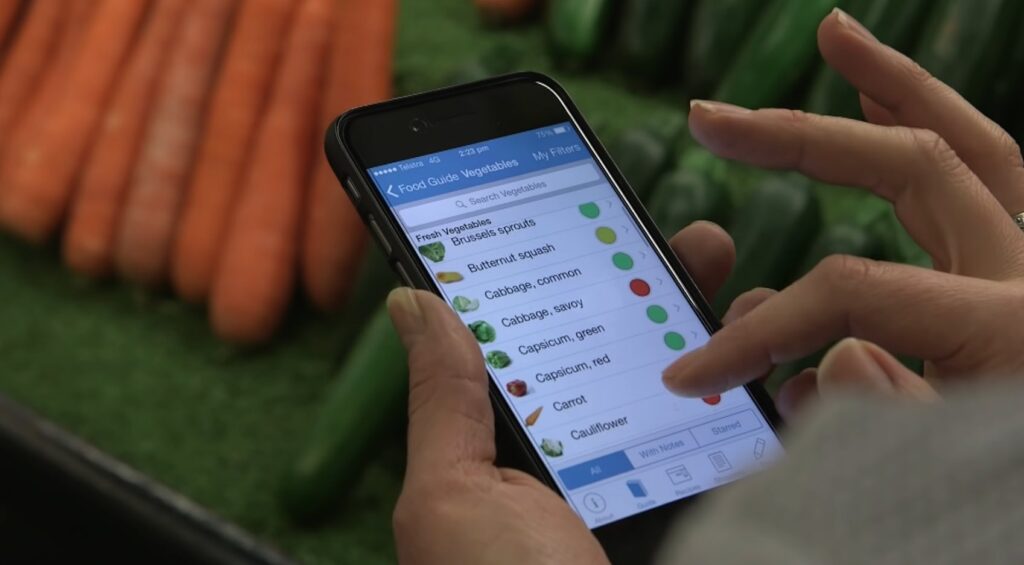
Download FODMAP infographics
The team of gastroenterologists and nutrition scientists at Monash University became the first group in the world to measure the FODMAPs in food. The foods in the Monash database have undergone rigorous testing to ensure the information is accurate and based on scientific laboratory evidence.
Using the Monash app on my cell phone, I accessed the database routinely while on the low FODMAP diet. Without it, I wouldn’t have discovered which foods I can and cannot tolerate. I still use it to stay on track with a low FODMAP diet.
Medical professionals don’t know what causes IBS, and there is no cure for it. They suspect it might be hereditary, and I can see the linkage there. When it comes to gut weakness, I have had a compromised lower gastrointestinal (GI) tract since early childhood. I always felt that I had inherited Dad’s faulty digestive system. He lived with lower GI problems his entire life.
But now that they know to associate IBS with FODMAP foods, medical doctors and registered dieticians can help people manage their IBS symptoms through diet.
My core values are aligned with veganism
As I have transitioned from meat to vegetarian to vegan, I have come to realize that the story of my journey from vegetarian to vegan is woven with threads that are anchored in a set of core values.
- I believe all life is sacred and that animals are of no less value than humans.
- I oppose the mistreatment of animals and all pursuits that cause them pain, suffering, or prolonged anxiety.
- I feel strongly that animals are not here for my use or anybody else’s. They are their own beings, born into the web of life with their own inherent purpose, the same as you and me.
- I am ethical and conscious in my conduct.
- I hold myself accountable for the choices I make of what to put in and on my body.
- I take responsibility for the consequences of my thoughts and actions.
- I value community.
- I am interested in self-improvement and the betterment of the world.
- I believe vegans are connected through the shared ethics of compassion, kindness, and health; we journey together on a unique path.
Vegan stories are a pathway to transformation and changing the world
By telling our stories of how and why we became vegan, we testify to a life of health, happiness, joy, and compassion. Vegan Storyteller is an outlet for the stories that serve as pathways to transformation.
A vegan lifestyle is the only norm that makes sense for our evolving world. Through our stories of transformation, we illuminate the world and give witness to the health, love, and happiness that spring forth from treating animals with deep compassion and kindness.
Vegans are united by a universal and powerful desire to save the lives of people, animals, and, ultimately, Planet Earth.
When a radical shift in nature or human systems occurs, it happens through a process that Margaret Wheatley describes as Emergence. Emergence has a life cycle that begins with networks, shifts to intentional communities of practice, and evolves into powerful systems capable of global influence.
We are seeing this with veganism. The global vegan movement is in Emergence. We are sharing knowledge, wisdom, and stories to influence global systems and create a better world.
We are emerging as a movement through the blogsites we create, the song lyrics and poems we write, the art we produce, and the intentional comments we post on social media.
Our stories matter. Using stories to grow the vegan movement is crucial if we are to see the future we envision for ourselves, for animals, and for the environment.
Emergence has a life-cycle that begins with networks, shifts to intentional communities of practice and evolves into powerful systems capable of global influence.
Margaret Wheatley Tweet
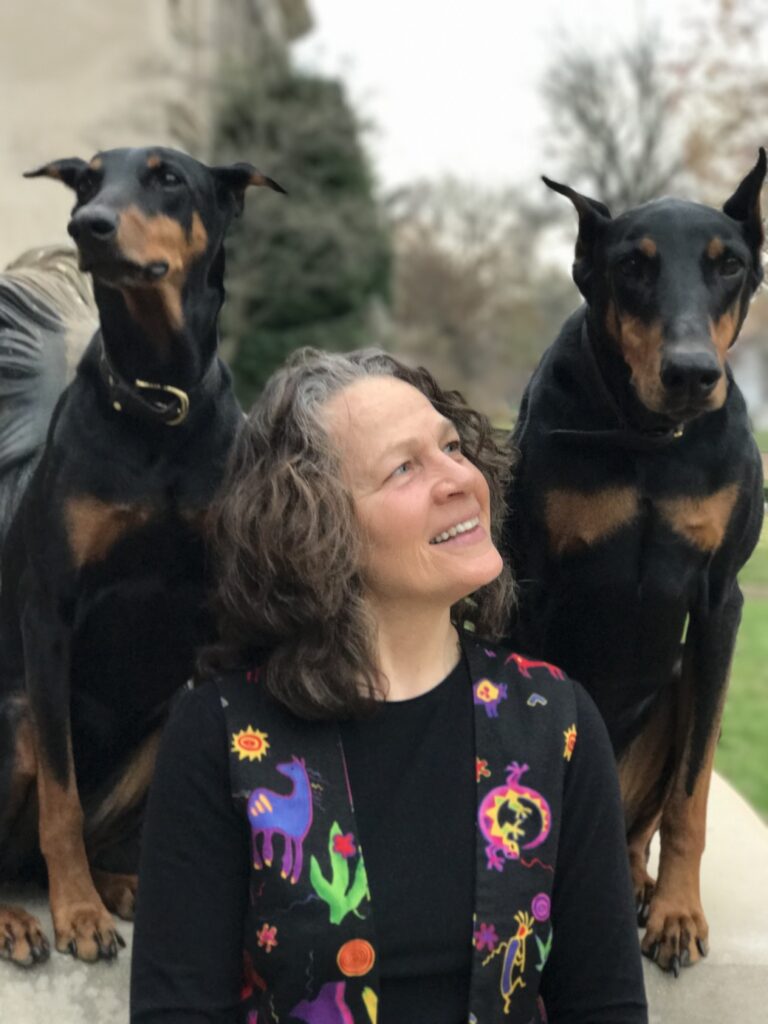
Follow Jeanette McDermott
When I began a 40-day vegan practice for Lent eight years ago I didn’t know where I was going with it. All I knew at the time is that it felt good. I was opening up to more things in life. I was more at peace and discovering more and more goodness with each passing day. I wanted more of that. Sharon Bolden
Read next 40-Day vegan practice for Lent saves Sharon’s life.

